
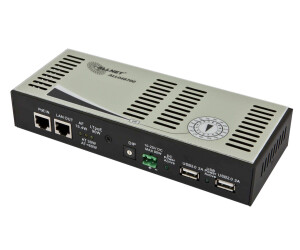
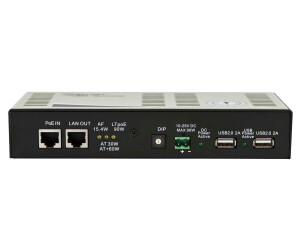


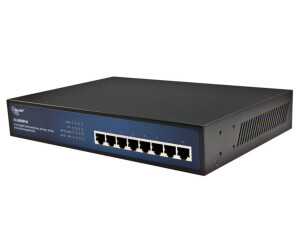
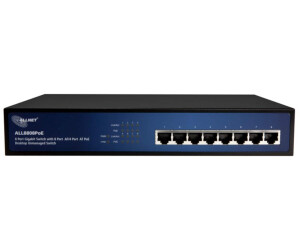
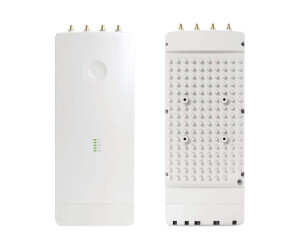










Detailed Explanation of Access Points:
An Access Point (AP) is a fundamental device in the networking domain that serves as a central interface for wireless connectivity of devices to a wired network. It plays a crucial role in enabling wireless connectivity, facilitating communication, and providing network access in various environments. Below is a comprehensive overview of the Access Point device, including its definition, functions, benefits, and applications.
Definition and Functions of Access Points:
An Access Point (AP) is a hardware device specifically designed to provide wireless connectivity for a variety of Wi-Fi-enabled devices, such as laptops, smartphones, tablets, and more, within a specific area. The primary task of an Access Point is to act as an intermediary between wireless endpoints (also known as clients) and the wired network infrastructure. This allows for the seamless integration of wireless and wired communication. Here are the key functions of an Access Point in detail:
1. Wireless Connectivity: The primary purpose of an Access Point is to provide wireless connectivity. It emits Wi-Fi signals that can be received by Wi-Fi-enabled devices. These signals allow devices to connect to the network without the need for physical cables. This function is crucial to integrating wireless devices like laptops, smartphones, and tablets into the network.
2. Network Authentication and Encryption: Security is of paramount importance in wireless networks. Access Points play a critical role in securing the network through authentication and encryption. They implement security protocols like WPA2 or WPA3 to ensure that only authorized users have access to the network. This is achieved through authentication methods like passwords or certificates. Additionally, data transmissions between the Access Point and clients are encrypted to ensure the confidentiality of transmitted data.
3. Traffic Management: Access Points play a vital role in efficiently distributing the available network bandwidth to connected clients. This is achieved through the use of Quality of Service (QoS) mechanisms. QoS allows certain data streams or applications to be prioritized to ensure that critical applications like VoIP or video streaming receive smooth performance even when the network is heavily utilized.
4. Roaming Support: In environments with multiple Access Points, such as enterprises or public areas, roaming is crucial. Roaming allows wireless devices to seamlessly transition from one Access Point to another as they move within the network coverage area. This happens automatically without users having to manually switch their connection. This ensures that connectivity is maintained during movement.
5. SSID Configuration: A Service Set Identifier (SSID) is the name of the wireless network. Access Points can support multiple SSIDs, meaning they can represent different virtual networks within the same physical network. This is particularly useful to segment network traffic and set up separate networks for different purposes, such as a guest network or an employee network.
6. Network Monitoring: Modern Access Points offer comprehensive monitoring features that help administrators monitor network performance and usage. This includes monitoring bandwidth, traffic patterns, and signal strength. By analyzing this information, bottlenecks or issues can be identified to optimize network performance.
7. Mesh Networks: Advanced Access Points can collaborate in what is known as mesh networks. A mesh network allows Access Points to communicate wirelessly with each other, extending network coverage in areas with weak signals. Data is relayed across multiple Access Points to ensure reliable connectivity, even in hard-to-reach areas.
Advantages of Access Points:
1. Wireless Connectivity: A central advantage of Access Points lies in their ability to provide wireless connectivity. By emitting Wi-Fi signals, they allow users to wirelessly connect to the network. This significantly enhances convenience and mobility, enabling users to access resources and services without the constraints of physical cables.
2. Flexibility and Scalability: Access Points offer flexibility and scalability for wireless networks. As the demand for wireless connectivity increases, Access Points can be easily added to expand coverage and support more devices. This is particularly useful in businesses, educational institutions, and event venues where a growing number of devices need to be connected.
3. Cost Efficiency: Using Access Points in areas with existing wired network infrastructure provides a cost-effective solution. Instead of extensive cabling work to connect devices, Access Points can be strategically placed to provide wireless coverage. This not only reduces installation costs but also enables rapid deployment.
4. Roaming Support: In environments with multiple Access Points, such as large buildings or campus grounds, roaming support allows for seamless connectivity as users move between different coverage areas. A device can automatically switch from one Access Point to another without interrupting connectivity. This is particularly advantageous in high-mobility environments.
5. Guest Network Isolation: By using multiple SSIDs, Access Points can isolate traffic between internal network resources and guest devices. This is crucial for security, as guest devices should not have direct access to internal resources. Isolation enhances network security by limiting potential attack vectors.
6. Centralized Management: Modern Access Points can often be centrally managed through management software. This allows administrators to perform configurations, updates, and monitoring from a central location. It simplifies management and provides a holistic view of the network. Changes can be efficiently implemented, and issues can be quickly identified and resolved.
Applications of Access Points:
1. Home Networks: Access Points are an essential component of modern home networks. They ensure Wi-Fi coverage in apartments and houses, allowing residents to access the internet wirelessly and share resources such as printers, file shares, and multimedia devices. A home network supported by an Access Point enables household members to access the internet from various locations within the house and connect devices.
2. Enterprise Environments: In offices, schools, and other public facilities, Access Points play an indispensable role in providing wireless connectivity to employees, students, and visitors. This connectivity allows users to access the network and the internet from anywhere in the building, enhancing work productivity and the learning experience. Particularly in businesses, Access Points contribute to the implementation of Bring Your Own Device (BYOD) policies, allowing employees to use their own devices to access company resources and promote collaboration.
3. Hotspots and Public Areas: Access Points form the foundation of public Wi-Fi hotspots in airports, cafes, hotels, restaurants, and other high-traffic locations. These hotspots offer customers, guests, and passersby the opportunity to access the internet wirelessly. In today's world, the availability of Wi-Fi in public areas has become a fundamental expectation. This not only contributes to customer and visitor satisfaction but also enhances the appeal and competitiveness of these venues.
4. Industrial Environments: Access Points also find significant application in industrial settings. In warehouses, factories, and production facilities, they enable wireless communication between machines, devices, and control systems. This enhances the flexibility and mobility of the workforce, allowing them to move freely without being tethered by cables. Additionally, Access Points enable remote monitoring and control of equipment and processes, leading to increased efficiency and operational optimization.
5. Outdoor Deployments: Specially designed Access Points with weather-resistant features are used in outdoor deployments. They are utilized in outdoor events such as concerts, sports events, and festivals to provide attendees with wireless connectivity. These Access Points allow participants to connect their devices and exchange real-time information, share photos and videos, or join social media conversations. Furthermore, Access Points are a cornerstone of Smart City initiatives, where public Wi-Fi is provided in urban areas. This increases citizen connectivity, promotes digital inclusion, and enables innovative services such as interactive city guides, public transportation information, and environmental monitoring.
Summary of an Access Point:
An Access Point is a versatile and essential networking device that serves as a bridge between wireless devices and wired network infrastructures. It plays a key role in providing wireless connectivity and offers numerous functions that are of great importance for both home and enterprise networks.
1. Bridge Between Wireless and Wired: The Access Point acts as a bridge that spans the gap between wireless devices and the wired network. It receives and transmits wireless signals to and from Wi-Fi-enabled devices such as laptops, smartphones, and tablets, facilitating communication with the wired network infrastructure that provides internet access and resources such as servers and printers.
2. Wireless Connectivity: The primary task of an Access Point is to provide wireless connectivity. It emits Wi-Fi signals that are received by Wi-Fi-enabled devices to establish a wireless connection to the network. This allows users the freedom to move within the coverage area while still having access to network resources.
3. Traffic Management: An Access Point manages the traffic between wireless devices and the network. This includes distributing the available bandwidth to connected clients to prevent network congestion. Quality of Service (QoS) mechanisms can be used to prioritize traffic, ensuring smooth performance for critical applications.
4. Security Protocols: The implementation of security protocols is a crucial function of Access Points. They ensure that only authorized users can connect to the network. Authentication methods such as passwords or certificates are used to verify user identity. Additionally, data transmissions between the Access Point and clients are encrypted to ensure the confidentiality of transmitted data.
5. Benefits of the Access Point: The benefits of an Access Point are manifold. It offers flexibility, as it enables wireless connectivity in various environments, whether at home, in businesses, or public areas. Access Points are scalable, as they can be added based on the growing requirements of a network. Centralized management facilitates the configuration, monitoring, and updating of multiple Access Points in a network, saving time and resources.
The Access Point is a crucial element in today's interconnected world. Its functions, ranging from wireless connectivity to data management and security implementation, make it an indispensable component of networks that require connectivity, flexibility, and efficient resource utilization.





| id | title | mpn | price | manufacturer |
|
from *
/ |

